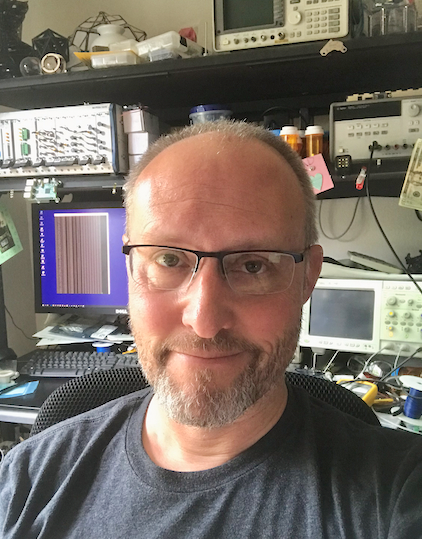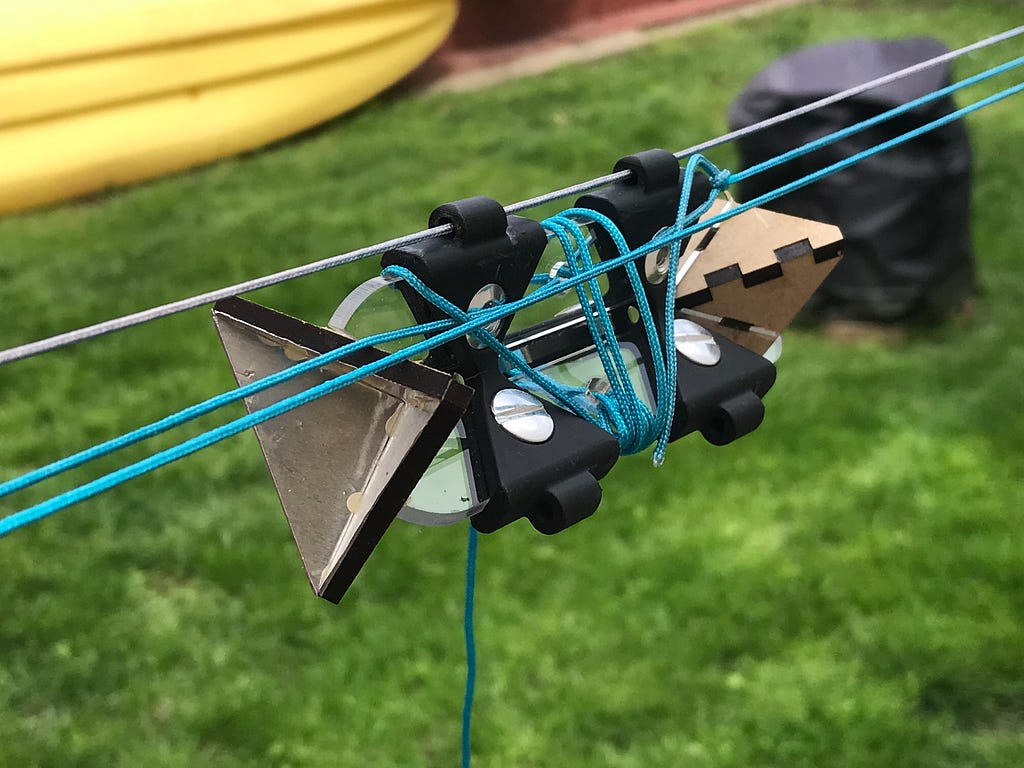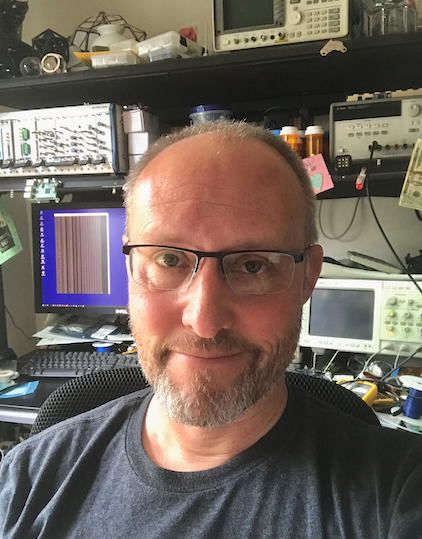Innovating in Place: How One Argo Engineer Transformed His Backyard Into a Doppler Radar Testing Lab
If you tried to imagine a person who would be ideally suited for life in quarantine, Jonathan Berry might be that guy. “I understand the feel of going feral,” laughs Jonathan, a senior hardware engineer working out of Argo AI’s Palo Alto test lab. “So this is kind of working for me.”
Jonathan has been making the most of his time sheltering in place with his wife and 8-year-old son by jury-rigging a test-track for new radar systems in his own backyard. Working from his “mad science cave” — a workshop and garage — he recently created a DIY doppler radar sled, aka a “rabbit,” speeding along a track made of nylon string and held taut by a pulley system anchored with a Nalgene bottle.
https://medium.com/media/6ec7925378fe0a21d66084109151964e/href
The idea for the system was to help Jonathan evaluate the accuracy of the specs provided by the radar system’s manufacturer, a task routinely done by Argo engineers in the test lab. But it was also just a cool and productive way for Jonathan to fill his seemingly endless time at home.
Far from feeling paralyzed by his inability to get into the lab, Jonathan has taken to quarantine like a natural. “It’s been a neat chance to experiment with the hardware, and come up with ideas. I’m pretty excited that I have this time to just dream up things.”
Jonathan learned how to function in forced isolation as a Naval officer on a guided missile frigate in the ’90s. He spent six months in the Persian Gulf and two more in the Baltic Sea, much of that time hunkering down in the glow of radar displays as the ship cruised (slowly) from port to port.

After leaving the Navy, he’d been working at NASA’s Jet Propulsion Laboratory in Pasadena when he decided to take a leave of absence and burrow down in the world’s coldest place. He logged over a year in Antarctica cloistered with other engineers and scientists at the Amundsen-Scott South Pole Station.
“My sister was working down there, and she told me that they were looking for a communications technician for satellites. So I said, I kinda miss winter, and wouldn’t mind leaving behind the L.A. traffic.” Next thing he knew, he was joining the coveted “300 Club” — a tribe of daredevils who have jogged from a 200-degree indoor sauna into a minus-100-degree Antarctic night. (Jonathan still remembers the surreal sight of jet entrails of “ice fog” flying off people’s bodies as they hurtled through the cold.)
Back in more temperate Palo Alto, Jonathan has been putting his maker’s mind to work by tinkering with his DIY rabbit sled. He first built corner reflectors with off-the-shelf parts like plastic boxes and copper tape. Then he began to swap in components designed and fabricated right at home. In March, days after California’s shelter-in-place orders, he bought a 3D printer, which he used to create custom pulley and drive-wheel mechanisms, a lightweight tripod mount for an automotive radar, and modular parts that allow the rabbit sled to glide smoothly along a nylon string. He also used a laser cutter in his garage to create the structural supports for the sled’s drive motor and PC boards, flexible pulley systems to support the rabbit’s string, plus a custom-mounting fixture for a Raspberry Pi.

More than just a diversion from the depressing drumbeat of coronavirus news, his DIY creations are actually producing measurable results. The development work performed on the rabbit sled will be useful for a wide variety of planned radar testing in the labs back at Argo. Other radar development work has produced a graphical software interface for programming and checking out radars in a production environment. Most recently, he’s been building an ambient light logging system to assist with camera development efforts, and honing his skills with Solidworks for future electromechanical gadgetry.
But while what looks like recreation is actually real work for Jonathan, he’s still finding time to play for playing’s sake. To that end, the 3D printer has come in especially handy. “My son and I are working on a model airplane,” he says. “We’re gonna try to fly it later this week.”
